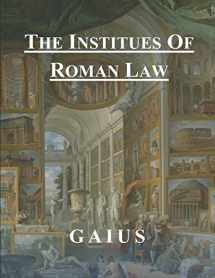
The Institutes of Roman Law
Book details
Summary
Description
“The Institutes” of Gaius, written about the year AD 161, was an introductory textbook of legal institutions divided into four books: the first treating of persons and the differences of the status they may occupy in the eye of the law; the second of things, and the modes in which rights over them may be acquired, including the law relating to wills; the third of intestate succession and of obligations; and the fourth of actions and their forms. Another circumstance which renders the work of Gaius more interesting to the historical student than that of Justinian, is that Gaius lived at a time when actions were tried by the system of formulae, or formal directions given by the praetor before whom the case first came, to the judex to whom he referred it. Without a knowledge of the terms of these formulae it is impossible to solve the most interesting question in the history of Roman law, and show how the rigid rules peculiar to the ancient law of Rome were modified by what has been called the equitable jurisdiction of the praetors, and made applicable to new conditions, and brought into harmony with the notions and the needs of a more developed society. It is clear from evidence of Gaius that this result was obtained, not by an independent set of courts administering, as in England previous to the Judicature Acts, a system different from that of the ordinary courts, but by the manipulation of the formulae. In the time of Justinian the work was complete, and the formulary system had disappeared. The work was lost to modern scholars, until, in 1816, a palimpsest was discovered by B. G. Niebuhr in the chapter library of Verona, in which some of the works of St. Jerome were written over some earlier writings, which proved to be the lost work of Gaius. The greater part of the palimpsest has, however, been deciphered with the help of August von Bethmann-Hollweg, and the text is now fairly complete. More recently, two sets of papyrus fragments have been found. The discovery of Gaius' work has thrown a flood of light on portions of the history of Roman law which had previously been most obscure. Much of the historical information given by Gaius is wanting in the compilations of Justinian, and, in particular, the account of the ancient forms of procedure in actions. In these forms can be traced "survivals" from the most primitive times, which provide the science of comparative law with valuable illustrations, which may explain the strange forms of legal procedure found in other early systems.


We would LOVE it if you could help us and other readers by reviewing the book
Book review



